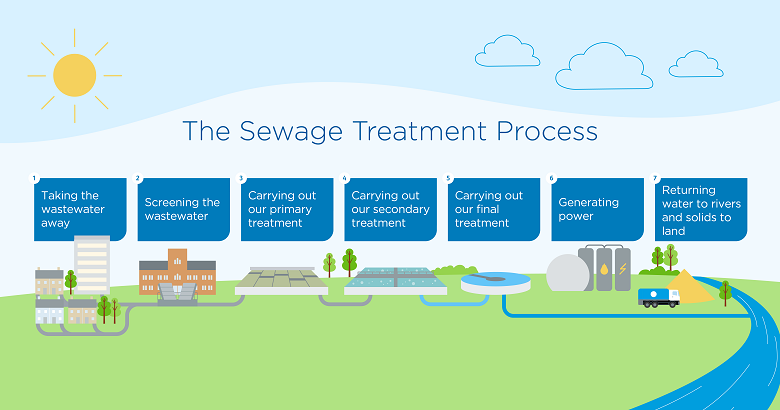Ingenious Strategies to Waste Water Treatment Technologies
Ingenious Strategies to Waste Water Treatment Technologies
Blog Article
Strategic Approaches to Improve Drainage Therapy Performance and Lessen Environmental Impact
In the realm of waste water treatment, the pursuit for boosted efficiency and minimized environmental impact is a perpetual difficulty that demands calculated services. As culture faces the crucial to manage water resources sustainably, a nuanced approach comes to be important. The assimilation of sophisticated therapy technologies, energy-efficient processes, source recuperation strategies, improved nutrient removal techniques, and smart tracking and control systems represents a diverse structure for resolving these pushing issues. Nevertheless, what lies at the core of this facility internet of techniques is the prospective to reinvent the means we approach waste water treatment, not equally as a procedure of disposal, yet as an important chance for advancement and ecological stewardship.
Advanced Therapy Technologies
Sophisticated membrane layer purification systems have changed sophisticated wastewater therapy procedures, dramatically enhancing the elimination of pollutants. These innovative systems operate forcibly water via a semi-permeable membrane, properly separating impurities from the water stream. The membrane's tiny pores trap contaminants such as microorganisms, viruses, and suspended solids, allowing only purified water to travel through. This technology has actually confirmed to be very efficient in getting rid of a variety of impurities, including drugs, heavy metals, and organic compounds, which are commonly challenging to get rid of through traditional therapy methods.
Furthermore, membrane filtration systems use various benefits over traditional therapy strategies. In addition, these systems are extremely flexible and can be easily incorporated right into existing treatment plants or utilized as standalone devices for decentralized applications.
Energy-Efficient Procedures
The combination of energy-efficient procedures in wastewater therapy systems is crucial for optimizing source application and minimizing operational expenses. One vital technique to boosting power performance in wastewater treatment is the use of advanced aeration systems, such as great bubble diffusers or surface area aerators, which can enhance oxygen transfer performance and decrease energy usage.
Furthermore, enhancing process control and automation with using advanced sensing units and keeping an eye on systems can boost overall energy performance by adjusting operations in real-time based upon real need and problems. Applying power audits and on a regular basis keeping track of power performance indicators are necessary methods to identify areas for improvement and track energy-saving campaigns successfully. On the whole, the adoption of energy-efficient processes in wastewater therapy not just profits the environment however additionally adds to long-term price savings and functional sustainability.
Source Recuperation Strategies
With a focus on optimizing source use and sustainability in wastewater treatment systems, the implementation of source recovery strategies becomes an essential aspect in enhancing functional efficiency. Source recovery techniques in imp source wastewater treatment entail the recognition and extraction of useful sources from the waste stream, therefore turning what was when thought about waste right into a beneficial asset. By carrying out resource recuperation strategies such as nutrient elimination and recovery, energy generation from raw material, and the production of recyclable water, wastewater therapy plants can lessen ecological impact while making the most of efficiency.

Improved Nutrient Removal Techniques
Carrying out advanced nutrient elimination techniques is crucial for enhancing the performance of wastewater therapy systems. One of the crucial techniques made use of for enhanced nutrient removal is the procedure of organic nutrient removal (BNR), which includes the elimination of nitrogen and phosphorus through organic processes.

Along with BNR, advanced treatment techniques such as membrane bioreactors (MBRs) and created wetlands can likewise be used to boost nutrient elimination efficiency. MBRs make use of membrane layers to accomplish premium effluent requirements by effectively removing nutrients and put on hold solids. Created wetlands resemble natural wetland procedures to get rid of nutrients through plant uptake, microbial task, and sedimentation. By incorporating these sophisticated nutrient elimination methods right into wastewater therapy sectors, systems and districts can properly decrease nutrient pollution and protect the environment.
Smart Tracking and Control Equipment
Using advanced innovation, the combination of clever monitoring and control systems reinvents the operational performance of wastewater over at this website treatment facilities. These systems integrate advanced sensors and data analytics to continuously monitor crucial parameters such as pH degrees, turbidity, liquified oxygen, and flow prices in real-time. By gathering and examining this data, drivers can gain important insights into the performance of the treatment processes, allowing aggressive changes to enhance treatment effectiveness.
Smart tracking and control systems also sustain remote monitoring abilities, permitting drivers to gain access to real-time information and control features from off-site locations. This remote ease of access improves functional versatility and responsiveness, making it possible for swift treatments in situation of system breakdowns or variations in influent top quality. The predictive maintenance capabilities of these systems assist avoid equipment failures and decrease downtime, ultimately enhancing the general dependability of wastewater treatment operations.
Verdict
In final thought, tactical methods such as sophisticated therapy innovations, energy-efficient procedures, source healing techniques, boosted nutrient removal strategies, and wise tracking and control systems play a crucial function in boosting wastewater treatment efficiency and reducing ecological impact. By executing these strategies, wastewater treatment plants can improve their general performance, decrease power usage, recoup important resources, and make sure compliance with ecological guidelines. These techniques are important for effective and sustainable wastewater administration methods.

In verdict, strategic strategies such as innovative treatment technologies, energy-efficient processes, resource healing methods, boosted you could check here nutrient removal techniques, and smart monitoring and control systems play a crucial function in enhancing wastewater therapy effectiveness and lessening environmental influence.
Report this page